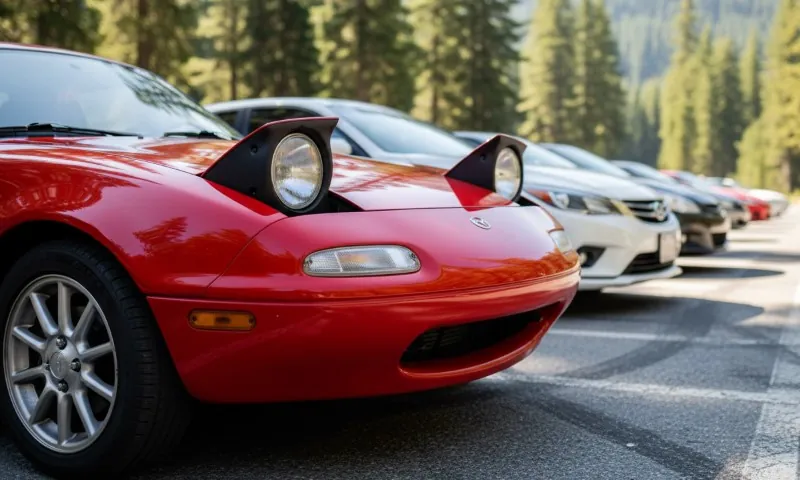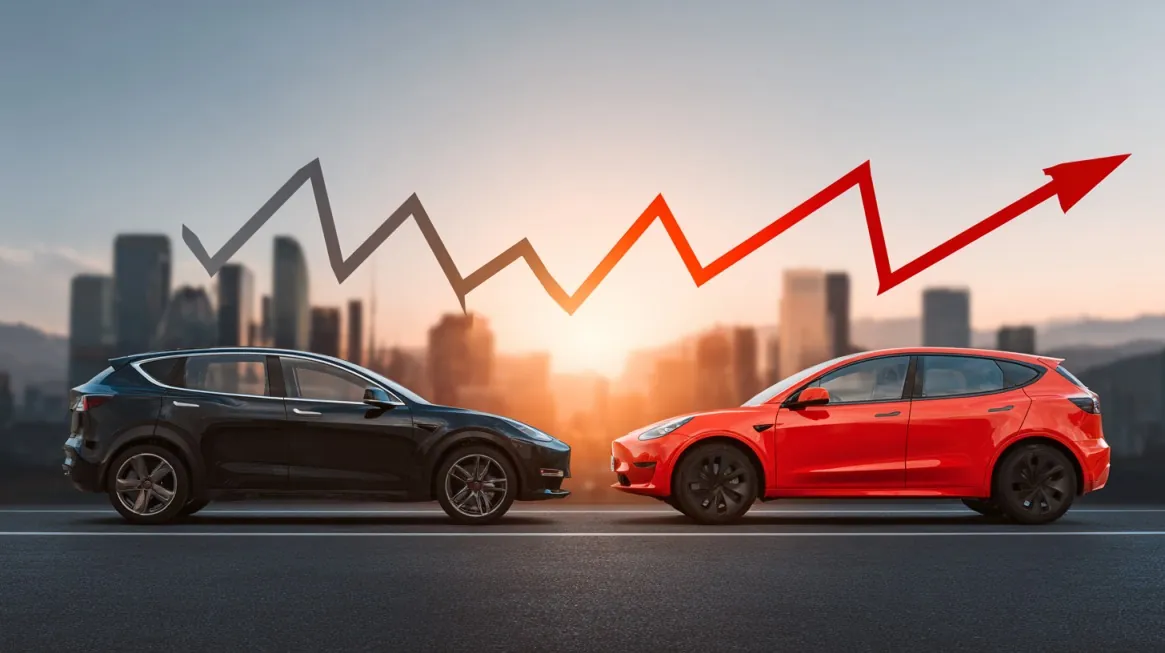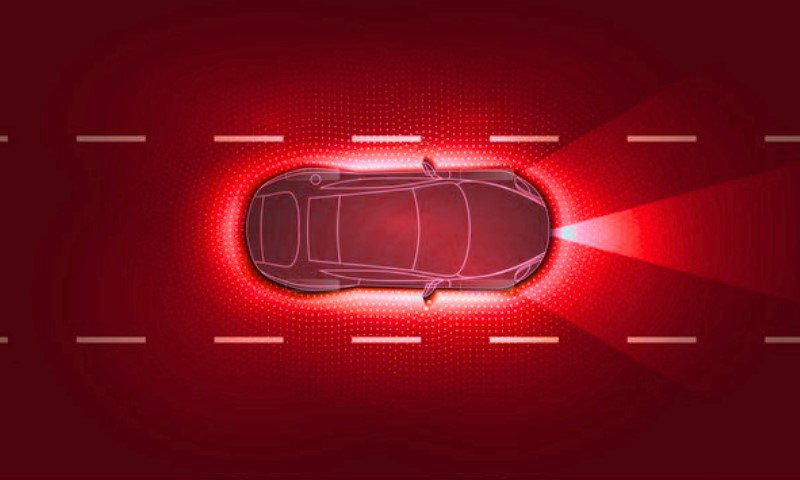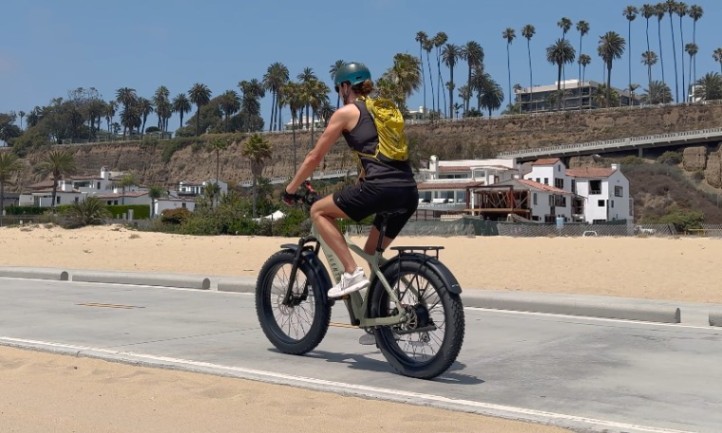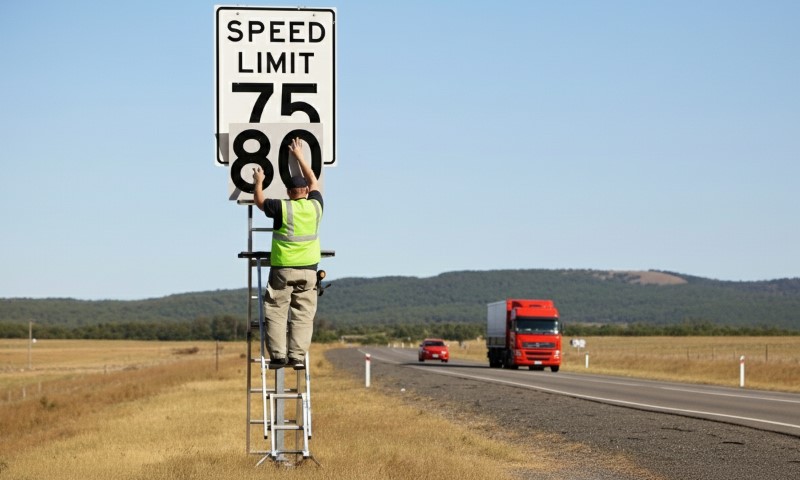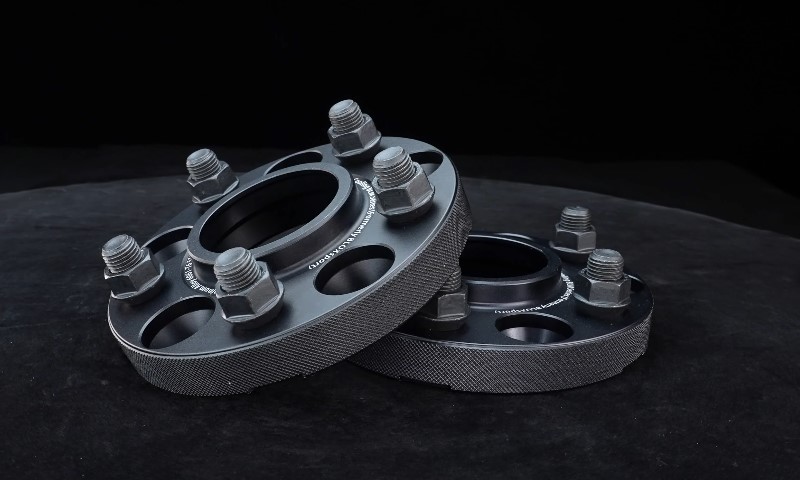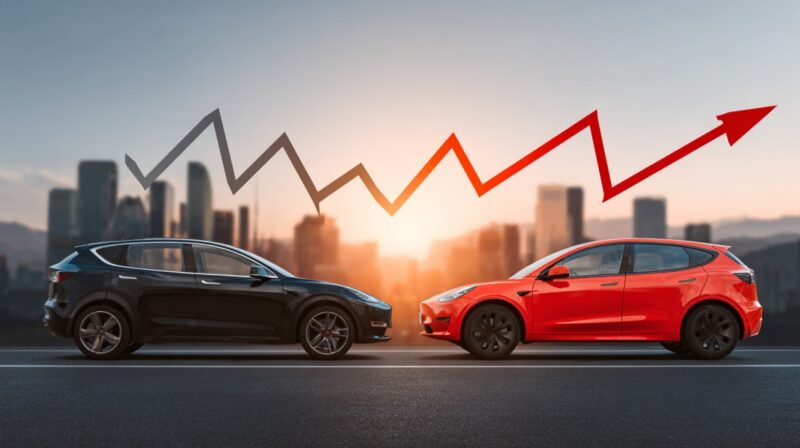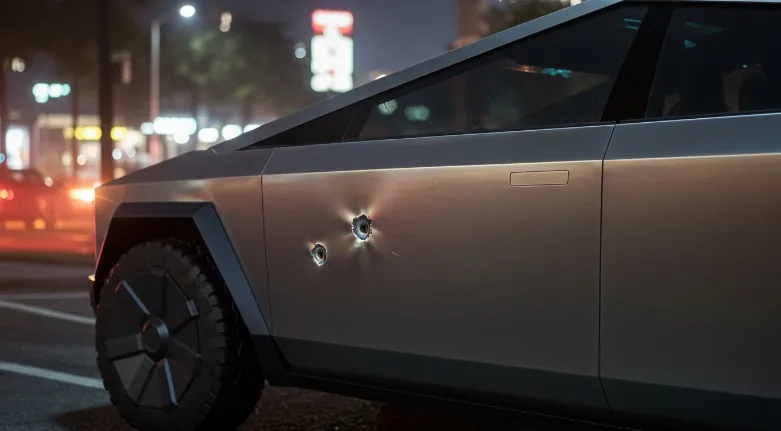
Share Post:
When the Tesla Cybertruck was first revealed back in 2019, it wasn’t just the angular, sci-fi-inspired design that turned heads. It was the promise that this all-electric behemoth could stop bullets.
Elon Musk took the stage with a sledgehammer, steel balls, and bold claims: the Cybertruck’s ultra-hard stainless steel shell could resist 9mm rounds. Nearly six years later, the question still lingers in the public imagination: Is the Cybertruck actually bulletproof?
Let’s break down what’s real, what’s exaggerated, and what matters for anyone considering the Cybertruck in 2025.
Table of Contents
ToggleKey Points
- Cybertruck’s steel body can stop 9mm handgun rounds, but not rifle fire.
- No official NIJ ballistic certification exists for the vehicle.
- Windows are not bulletproof and failed in multiple tests.
- “Bulletproof” label is mostly marketing — real protection is limited.
What the Cybertruck Is Made Of
The core of the Cybertruck’s durability claim lies in its body. According to SAE International, Tesla used 3 mm thick 301 stainless steel, the same grade reportedly used on SpaceX’s Starship rocket.
Each door panel weighs around 60 pounds, underscoring how thick and rigid the body really is. Unlike most consumer vehicles that rely on crumple zones and traditional automotive steel, the Cybertruck goes for brute force.
From a materials perspective, that gives it a leg up in resisting some ballistic threats, particularly from handguns. But how far that protection goes depends heavily on the type of round, angle, distance, and the point of impact.
What Tesla Claimed – And Didn’t
At the unveiling, Musk claimed that the Cybertruck could stop 9mm bullets. Later, on social media, he expanded that to include .45 ACP rounds as well.
Tesla also suggested that the windshield would stop 9mm rounds — but in the infamous live demo, a metal ball shattered the glass.
That particular moment became meme-worthy. But more importantly, it raised a larger question: just how far was Tesla willing to go with this “bulletproof” narrative?
As of June 2025, Tesla has not submitted the Cybertruck for any official ballistic certification, such as the NIJ (National Institute of Justice) ratings that professional armored vehicles receive. That means we don’t have third-party validation for any of Tesla’s claims.
JerryRigEverything Test (March 2024)
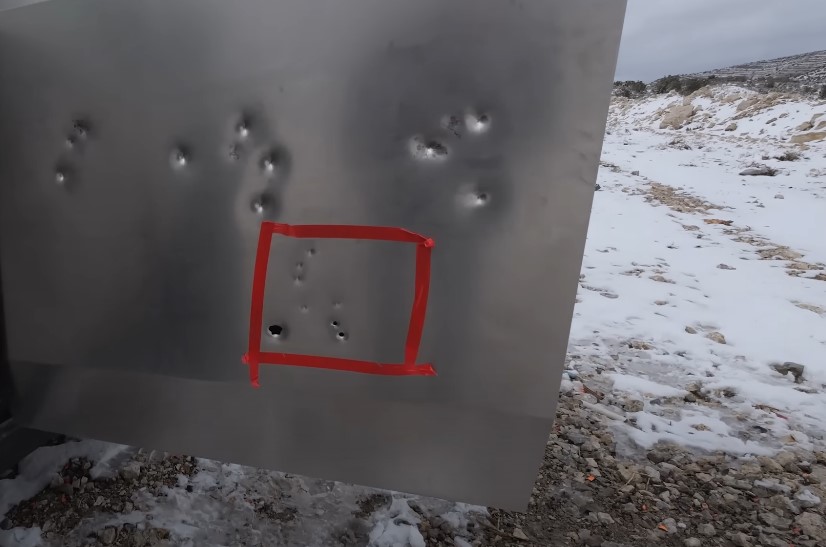
One of the most talked-about independent tests came from tech YouTuber JerryRigEverything, who subjected the Cybertruck to a barrage of real firearms. Here’s what he found:
| Caliber | Weapon Used | Result |
| 9mm | Glock 19 | No penetration. Dents visible, cracks after multiple hits. |
| .22 | Not specified | Minor surface dents, no meaningful damage. |
| .17 Hornady Magnum Rimfire | Not specified | Penetrated outer panel, stopped before exiting the other side. |
| .223 Remington | AR-15 | Penetrated both the door and inner panel. |
| .50 caliber | Rifle | Created finger-sized holes, passed through the vehicle entirely. |
The takeaway? Handguns — even repeated hits — didn’t breach the steel. Rifles did.
Tesla’s claim about stopping 9mm rounds holds up under independent testing. But once the rounds get faster, heavier, and sharper — like those from a .223 or .50 cal — the panels fail. That’s consistent with expectations. The Cybertruck is tough, but it’s no tank.
About Those Windows…
The flat, laminated glass Tesla uses in the Cybertruck is designed for impact resistance – rocks, debris, maybe even steel spheres (depending on who’s throwing them). But bulletproof glass? That’s another level.
Despite Elon’s claim about 9mm resistance, no credible test has demonstrated that the Cybertruck’s windows can withstand live ammunition. And again, no official certification exists, as per Motortrend.
In fact, in Tesla’s own internal firearms test analyzed by Hooniverse, rounds caused cracking in the glass even when they didn’t fully penetrate. The most powerful round tested — 00 buckshot from a Benelli M4 — penetrated the door but did not breach the passenger compartment.
One important caveat: Tesla conducted their test at 30 to 40 feet, whereas NIJ standards require testing at 16 feet. That extra distance could reduce bullet velocity and give a false sense of protection.
What “Bulletproof” Really Means (and Why It Matters)
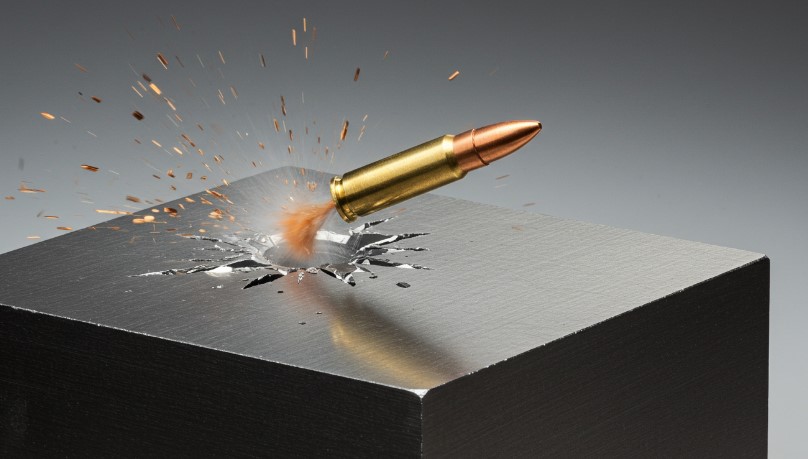
Experts agree on one thing: the word “bulletproof” is misleading. No material is invincible to all bullets, all the time.
- Iain Harrison, editor-in-chief of Recoil and a former British Army captain, stated that 3 mm of hardened 301 stainless steel can stop most 9mm rounds — but that’s where the confidence stops, as per Motortrend resources.
- Mark Burton from Armormax, a company that specializes in armored vehicles, points out that stainless steel is rarely used in the industry because it’s too heavy and inefficient compared to synthetic laminates or hardened ballistic steel.
- Sean Kealey, former U.S. military and writer for Hooniverse, criticized Tesla’s firearm test for using hollow point rounds — which are designed to expand on soft tissue, not penetrate armor. He also flagged the distance issue, noting that 44% of real-world shootouts happen within 5 feet. That’s far more intense than the scenarios Tesla tested.
No NIJ Certification, And Why That Matters
If you’ve ever looked into actual armored vehicles, you’ll know that there’s a standardized system in place: NIJ levels, ranging from IIA to IV.
- Level IIIa, for example, is rated to stop most handgun and shotgun rounds.
- Level III and IV are built for rifle protection — think AK-47s or AR-15s.
To earn certification, a vehicle must survive multiple hits at specific distances, angles, and caliber levels — not just one-off tests.
The Cybertruck? None of that applies. Tesla has not submitted it for NIJ testing, and it has no official armor rating. That’s a crucial distinction. It’s one thing to say your truck resisted a 9mm hit during a demo. It’s another to be verified by a neutral third-party under controlled, repeatable conditions.
Should You Count on the Cybertruck for Protection?
Here’s what you need to know:
What It Can Handle
- Most 9mm and .45 ACP rounds from common handguns.
- Possibly low-caliber rifle or rimfire rounds, though penetration risk rises sharply.
- Minor threats like rocks, thrown objects, or animal strikes on the road.
What It Can’t Handle
- High-velocity rifle rounds like .223 Remington or .50 caliber.
- Sustained attacks, as door deformation and cracking increase with repeat hits.
- Any direct shot to the glass.
Practical Considerations for Buyers
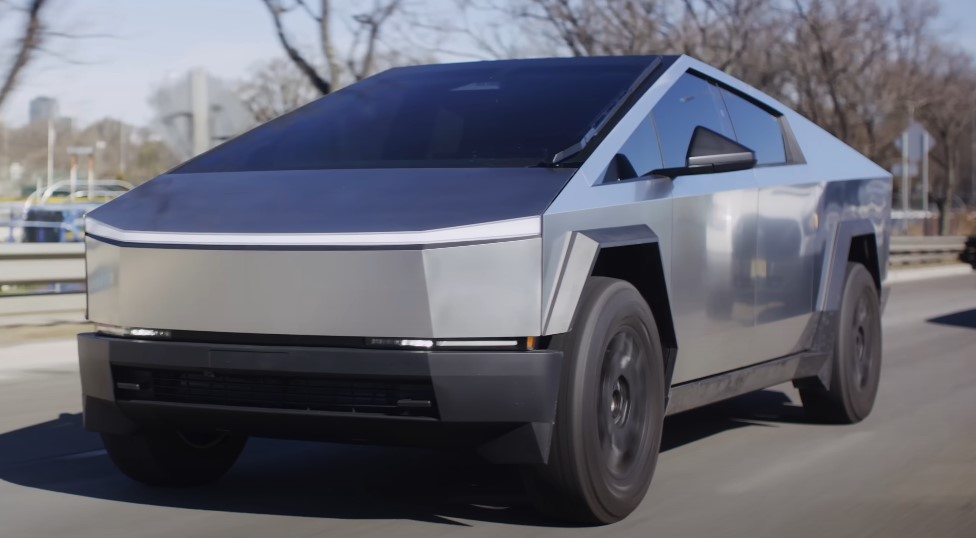
Before adding “bulletproof” to your list of Cybertruck must-haves, keep these in mind:
Trade-offs
- Heavy panels mean more weight, which could reduce range and payload capacity. Those 60-pound doors aren’t light — and EVs are already sensitive to extra load.
- You’re not driving an armored vehicle. There’s no composite layering, no run-flat tires, no cabin armor. This is still a consumer-grade pickup with a strong shell.
Everyday Use Cases
- Most Cybertruck owners aren’t facing ballistic threats. But for some, even limited protection might be a psychological comfort — especially in uncertain times or unpredictable environments.
- If you work in high-risk zones — private security, overseas contracts, or volatile urban centers — aftermarket armoring or a purpose-built armored SUV will serve you better.
Bottom Line
The Cybertruck is tougher than most vehicles on the road — no question about that. Its 3 mm stainless steel exoskeleton can shrug off handgun rounds that would turn other trucks into Swiss cheese. But there’s a ceiling to that protection. High-powered rifles, sustained fire, and vulnerable areas like the windows are all points of failure.
Without official certification, Tesla’s “bulletproof” claim should be taken for what it is: marketing, not military-grade armor.
If you’re shopping for a rugged, futuristic electric truck that can handle dents, bumps, and maybe even the occasional stray bullet, the Cybertruck delivers. But if your use case includes real ballistic threats, it’s worth looking into professional armoring solutions — or vehicles built from the ground up for that purpose.
In the end, it’s a beast of a truck — just not a bulletproof one in the way most people think.
Related Posts:
- How to Test if Engine Is Blown - DIY Tests That…
- 8 Safest Family Cars of 2025 – Crash Tests, Features…
- Steering Wheel Shaking While Driving? Here’s What It…
- Power Steering Fluid Leak? Here’s How to Repair It…
- Car Leaking Oil? Here's What You Need to Know and…
- Think Google Can Fix Your Car? Here’s Why You’re…



